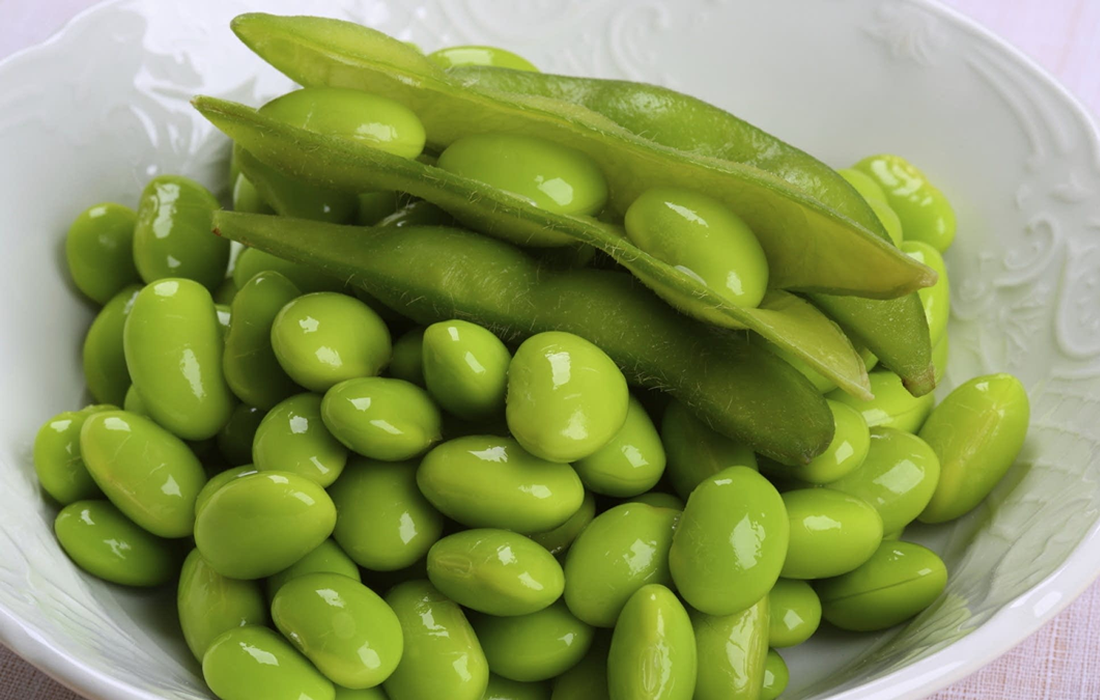Nutrition and Supplements
A Soybean Protein Reduce Risk of Metabolic Diseases
Over the last few decades, the prevalence of overweight and obesity among adults has increased worldwide. Over 2 billion adults are overweight, while over 650 million are obese. Metabolic syndrome is characterized by visceral obesity, hypertension, atherogenic dyslipidemia, insulin resistance, and glucose intolerance, raising the risk of metabolic-associated fatty liver disease (MAFLD). Convincing data suggest that systemic insulin resistance increases free fatty acid (FFA) transit from increased visceral adipose tissue into the liver and enhances hepatic de novo lipogenesis, resulting in fatty liver and enhanced hepatic insulin resistance.
A protein in soybeans blocks the production of a liver enzyme involved in the production of triglycerides and cholesterol
Elvira de Mejia, a professor of food science and human nutrition at the University of Illinois Urbana-Champaign, and her team found that the consuming soy flour rich in the protein B-conglycinin has the potential to reduce LDL cholesterol levels and lower the risk of metabolic diseases such as atherosclerosis and fatty liver disease.
The team defatted and ground into flour 19 soybean varieties, each of which contained differing proportions of the two proteins. The proportion of glycinin in these varieties ranged from 22%-60% while the B-conglycinin ratio ranged from 22%-52%.
Using a simulation of the human digestive process validated by other studies, the team sequentially mixed the defatted soybean flours with various fluids and enzymes to mimic the oral, gastric, intestinal and colonic phases of digestion.
They identified 13 bioactive peptides produced during digestion, most of which came from glycinin and B-conglycinin, according to the study.
In testing the digested materials’ capacity to inhibit the activity of HMGCR, a protein that controls the rate of cholesterol synthesis, the researchers found that their inhibitory properties were 2-to-7 times less potent than simvastatin, a popular drug used to treat high LDL cholesterol and fat levels in the blood that was used as a control in the study.
After classifying the soybean varieties by their glycinin and B-conglycinin composition and their HMGCR inhibitory properties, the team selected five varieties for further analysis.
These markers included HMGCR and angiopoietin-like 3, a protein secreted primarily by the liver that is a critical modulator of lipid metabolism. The team found that peptides from three of the digested soybean varieties reduced ANGPTL3 secretion by 41%-81% in correlation with their glycinin and B-conglycinin ratios.
Although the fatty acids reduced the liver cells’ absorption of LDL cholesterol by more than one-third, the soybean digests reversed this by inhibiting the expression of a protein. The digests increased the cells’ uptake of LDL by 25%-92%, depending on the soybean variety and its glycinin and B-conglycinin proportions.
Results and conclusions…
The digested soybeans’ peptides were able to reduce lipid accumulation by 50%-70%, and that’s very important. That was comparable to the statin, which reduced it by 60%. We also clearly saw different markers that were influenced by key enzymes that regulate hepatic lipogenesis, the development of a fatty liver.
Soybean intake may help to regulate cholesterol homeostasis in the liver and LDL oxidation, improving the potential for cardiovascular health. Soybean ingredients made from soybeans with greater proportions of β-conglycinin may be useful to inspire foods and meals containing synergistic components that together can improve the potential for healthful outcomes.
SOURCE:
Miguel Rebollo-Hernanz, Neal A. Bringe, Elvira Gonzalez de Mejia. Selected Soybean Varieties Regulate Hepatic LDL-Cholesterol Homeostasis Depending on Their Glycinin:β-Conglycinin Ratio. Antioxidants, December 22, 2022; 12 (1): 20 DOI: 10.3390/antiox12010020
IMAGE:

